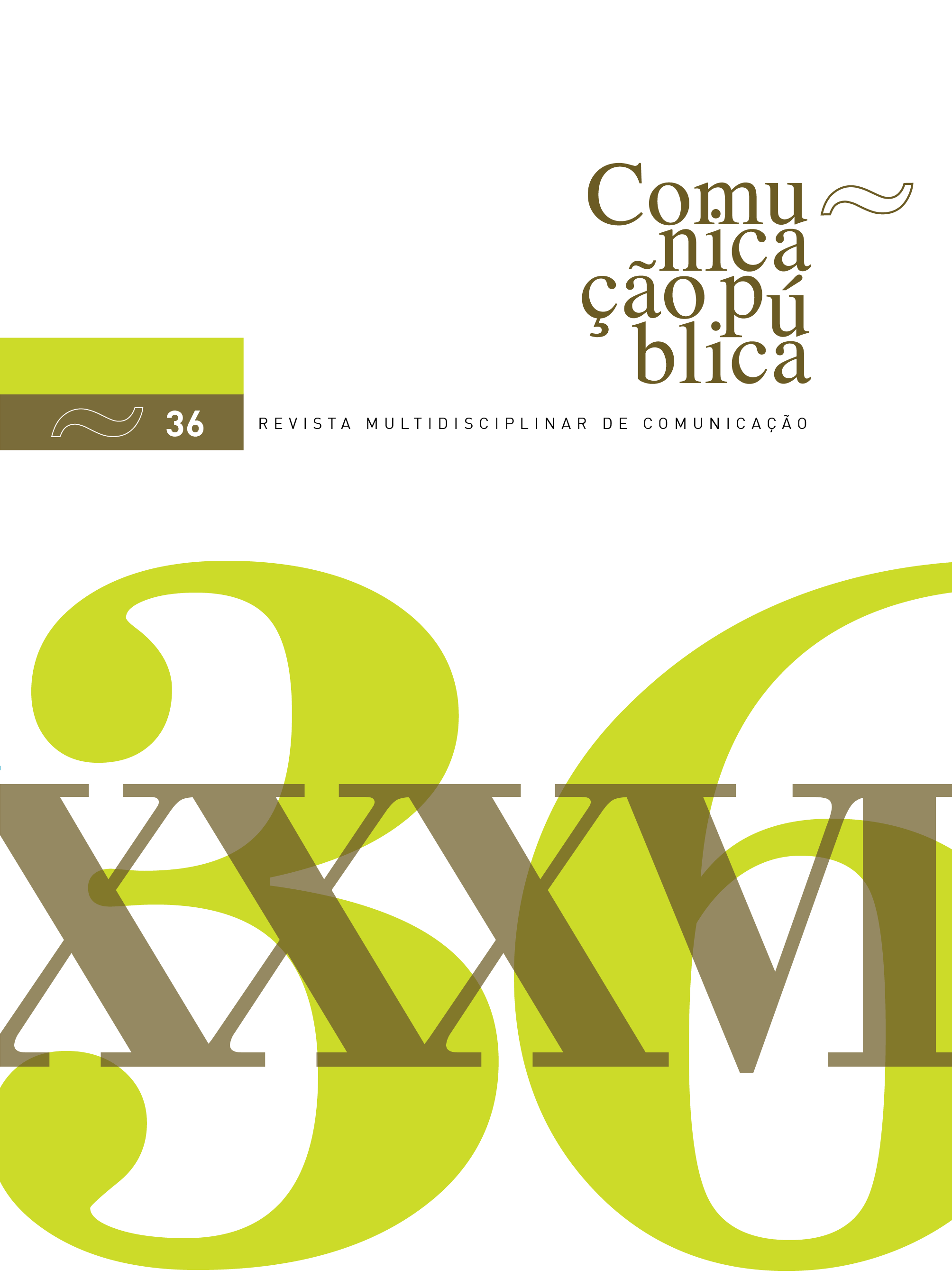Intensidade e efeitos da utilização da Internet no dia-a-dia do utilizador
DOI:
https://doi.org/10.34629/cpublica813Palavras-chave:
Utilização da Internet, permanentemente online e permanentemente conectado, sentimento de pertença, uso problemático da InternetResumo
O uso problemático da Internet, embora menos grave do que a dependência da Internet, é mais comum entre os utilizadores. Independentemente da atividade em que estão envolvidos, os indivíduos sentem a necessidade de estar constantemente online e disponíveis. Mesmo quando tentam escapar à rotina online, acabam por regressar frequentemente aos antigos hábitos. Foi realizado um inquérito para avaliar a intensidade e o impacto da utilização da Internet, com uma amostra de 433 indivíduos, com idades entre os 17 e os 33 anos, predominantemente do sexo feminino. Os resultados indicam um nível moderado de utilização da Internet, em linha com as referências identificadas na revisão da literatura. Curiosamente, apesar de utilizarem o smartphone diariamente durante várias horas, os participantes não demonstram sinais relevantes de uso problemático da internet. Em vez disso, dão prioridade às interações pessoais, com amigos e familiares.
Downloads
Referências
Baumeister, R., & Leary, M. (1995). The need to belong: desire for interpersonal attachments as a fundamental human motivation. Psychological Bulletin, 117(3), 497–529.
Beard, K. W., & Wolf, E. M. (2001). Modification in the proposed diagnostic criteria for internet addiction. Cyberpsychology & Behavior, 4(3), 377–383.
Breslau, J., Aharoni, E., Pedersen, E. R., & Miller, L. L. (2015). A review of research on problematic internet use and well-being: with recommendations for the U.S. Air Force. RAND Corporation.
Caplan, S. E. (2003). Preference for online social interaction: A theory of problematic internet use and psychosocial well-being. Communication Research, 30(6), 625–648.
Caplan, S. E. (2018). The changing face of problematic internet use: An interpersonal approach. Peter Lang Inc.
Caplan, S. E., & High, A. C. (2006). Beyond excessive use: The interaction between cognitive and behavioral symptoms of problematic internet use. Communication Research Reports, 23(4), 265–271.
CERN. (2020, December 28). A short history of the Web. https://home.cern/science/computing/birth-web/short-history-web.
Davis, R. A. (2001). Cognitive-behavioral model of pathological Internet use. Computers in Human Behavior, 17(2), 187–195.
Freytag, A., Knop-Huelss, K., Meier, A., Reinecke, L., Hefner, D., Klimmt, C., & Vorderer, P. (2021). Permanently online—always stressed out? The effects of permanent connectedness on stress experiences. Human Communication Research, 47(2), 132–165.
Hargittai, E. (2007). Whose space? Differences among users and non-users of Social Network Sites. Journal of Computer-Mediated Communication, 13(1), 276–297.
Hargittai, E., & Hinnant, A. (2008). Digital inequality: Differences in young adults' use of the Internet. Communication Research, 35(5), 602–621.
Howard, P., Rainie, L., & Jones, S. (2001). Days and nights on the internet: The impact of a diffusing technology. American Behavioral Scientist, 45(3), 383–404.
Levinson, D. (1977). The seasons of a man's life. Alfred A. Knoff.
Lopez-Fernandez., O. (2019). Internet and mobile phone addiction: health and educational effects. MDPI AG.
Lopez-Fernandez, O., Kuss, D. J., Romo, L., Morvan, Y., Kern, L., Graziani, P., ... Billieux, J. (2017). Self-reported dependence on mobile phones in young adults: A European cross-cultural empirical survey. Journal of Behavioral Addictions, 6(2), 168–177.
Lund, H. G., Reider, B. D., Whiting, A., & Prichard, J. R. (2010). Sleep patterns and predictors of disturbed sleep in a large population of college students. J Adolesc Health, 46(2), 124–132.
Madden, M. (2003). The changing picture of who's online and what they do. Pew Internet & American Life Project.
Murdock, K. K. (2013). Texting while stressed: Implications for students’ burnout, sleep, and well-being. Psychology of Popular Media Culture, 2(4), 207–221.
Parker, K., & Igielnik, R. (2020). On the cusp of adulthood and facing an uncertain future: What we know about Gen Z so far. Pew Research Center.
Patrão, I., & Sampaio, D. (2016). Dependências online — O poder das tecnologias. Pactor.
Petrucco, C., & Agostini, D. (2023). Problematic smartphone use and university students’ academic performance. Journal of e-Learning and Knowledge Society, 19(2), 30–38. https://doi.org/10.20368/1971-8829/1135747.
Pontes, H. M., Caplan, S. E., & Griffiths, M. D. (2016). Psychometric validation of the Generalized Problematic Internet Use Scale 2 in a Portuguese sample. Computers in Human Behavior, 63, 823–833.
Reich, S., & Vorderer, P. (2013). Individual differences in need to belong in users of social networking sites, in Moy, P. (Ed.), Communication and Community, Hampton Press, 129–148.
Reinecke, L., Klimmt, C., Meier, A., Reich, S., Hefner, D., Knop-Huelss, K., … Vorderer, P. (2018). Permanently online and permanently connected: Development and validation of the Online Vigilance Scale. PLoS ONE, 13(10), 1–31.
Sánchez-Hernández, M. I., González-López, Ó. R., Buenadicha-Mateos, M., & Tato-Jiménez, J. L. (2019). Work-life balance in great companies and pendings issues for engaging new generations at work. International Journal of Environmental Research and Public Health, 16, 1–20.
Thomée, S., Härenstam, A., & Hagberg, M. (2011). Mobile phone use and stress, sleep disturbances, and symptoms of depression among young adults — a prospective cohort study. BMC Public Health, 11(66), 1–11.
Tras, Z., Öztemel, K., & Baltaci, U. B. (2019). Role of problematic internet use, sense of belonging and social appearance anxiety in Facebook use intensity of university students. International Education Studies, 12(8), 1–10.
Throuvala, M. A., Pontes, H. M., Tsaousis, I., Griffiths, M. D., Rennoldson, M., & Kuss, D. J. (2021). Exploring the dimensions of smartphone distraction: Development, validation, measurement invariance, and latent mean differences of the Smartphone Distraction Scale (SDS). Frontiers in Psychiatry, 12: 642634.
Vorderer, P., Hefner, D., Reinecke, L., & Klimmt, C. (2018). Permanently online, permanently connected — Living and communicating in a POPC world. Routledge.
Vorderer, P., & Kohring, M. (2013). Permanently online: A challenge for media and communication research. International Journal of Communication, 7(1), 188–196.
Vorderer, P., Krömer, N., & Schneider, F. M. (2016). Permanently online — Permanently connected: Explorations into university students' use of social media and mobile smart devices. International Education Studies, 63, 694–703.
WeAreSocial & Hootsuite (2022). Global Digital Report 2022. https://www.hootsuite.com/resources/digital-trends.
Downloads
Publicado
Edição
Secção
Licença
Direitos de Autor (c) 2024 Copyright (c) 2024 Author

Este trabalho encontra-se publicado com a Licença Internacional Creative Commons Atribuição-NãoComercial 4.0.
Os conteúdos da Comunicação Pública estão licenciados com uma licença Creative Commons - Atribuição-NãoComercial 4.0 Internacional.




